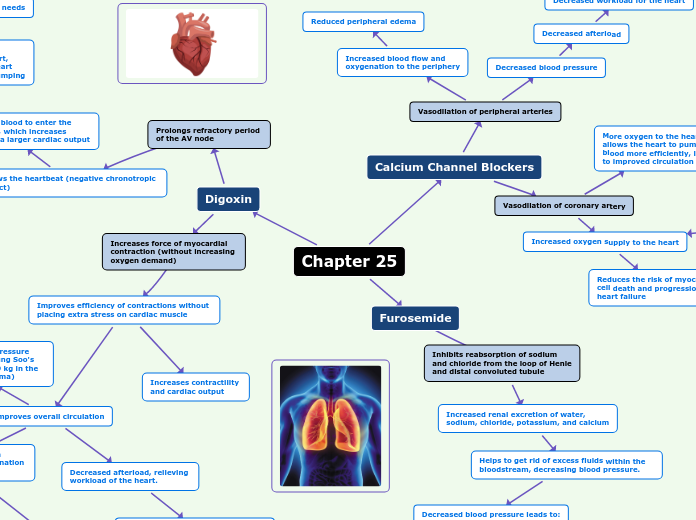da Megan Lauridsen mancano 5 anni
333
Chapter 25

da Megan Lauridsen mancano 5 anni
333

Più simili a questo
Allows more time for blood to enter the heart during diastole, which increases preload, allowing for a larger cardiac output
Larger cardiac output leads to improved pumping action of the heart, reducing the need to increase the heart rate to compensate for inefficient pumping
Decreased oxygen needs
Decreased workload on the heart!
Increases contractility and cardiac output
Improves overall circulation
Decreased afterload, relieving workload of the heart.
Less oxygenation needs of the heart
Patient doesn't need to breathe so hard anymore
Increased blood flow through lungs, aiding in proper oxygenation and gas exchange.
Helps to relieve central venous pressure and reduce peripheral edema (Jung Soo's case is severe as he has gained 9 kg in the past month, likely due to his edema)
Decreased afterload
Decreased workload for the heart
Prevents worsening of heart failure
Reduced peripheral edema
Increases blood flow through the lungs, reducing pulmonary pressure and edema. Also increases oxygenation in the blood
Reduced pulmonary edema leads to easier breathing
Reduces the risk of myocardial cell death and progression of heart failure
Helps to get rid of excess fluids within the bloodstream, decreasing blood pressure.
Decreased blood pressure leads to:
Decreased pulmonary blood pressure, which leads to reduced pulmonary edema, which leads to improved breathing and gas exchange.
Higher return of interstitial fluid to capillaries in the periphery
Decreased workload and oxygen consumption of the heart